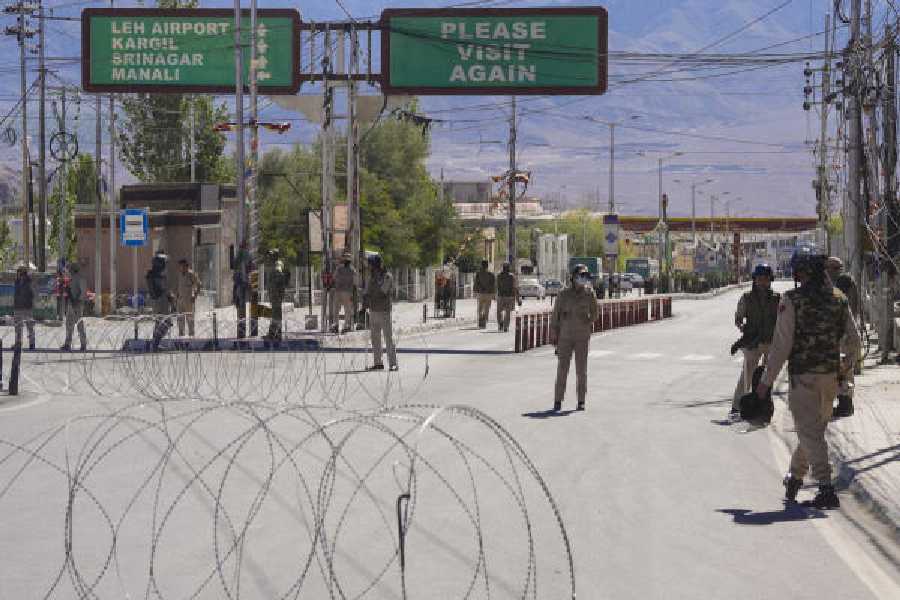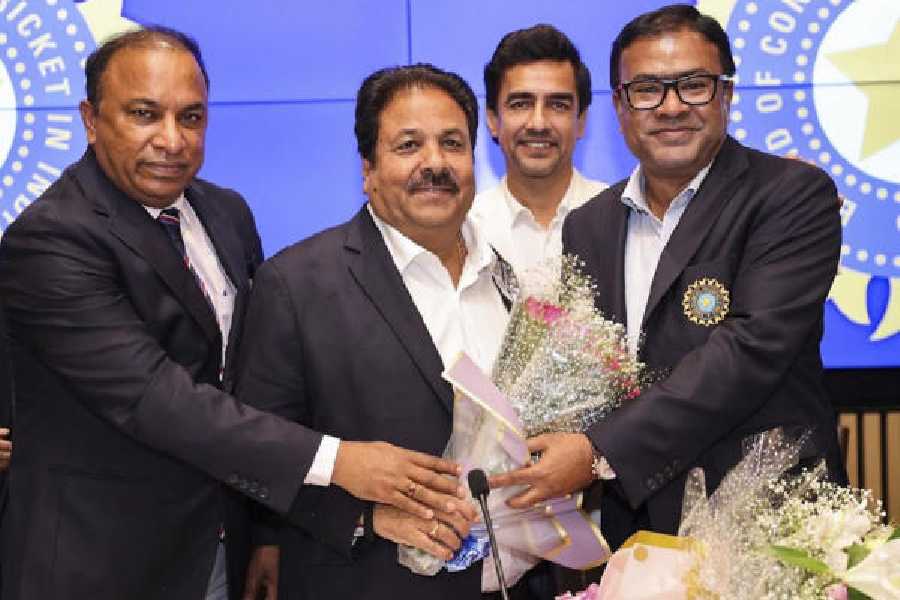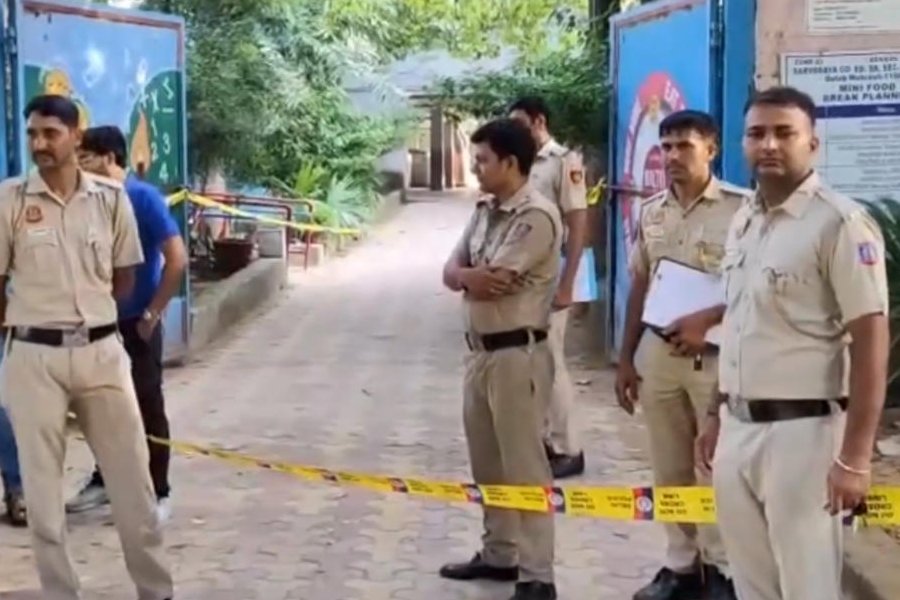 |
Quietly in her room, Devika slit her wrist. And then, with her blood, she wrote her ex-boyfriend’s name on the wall. Her parents found her before it was too late. Devika’s physical wounds have healed in these eight months, but depression still stalks her.
Bhavna is going through a similar crisis. The class topper’s teachers found her inattentive in class and referred her to the school counsellor. That’s when Bhavna confessed that she felt listless because she and her boyfriend were no longer together.
Devika is 11. Bhavna is all of nine.
Clearly, age is no bar for relationships — and breakups. School counsellors point out that children between nine and 12 are pairing up with classmates — and then undergoing pangs of separation. In many cases, depression follows. Sometimes, as in the case of Devika, they take an extreme step.
“These days, children feel a strong urge to have someone ‘special’ early in life. But they also break up fast,” says counsellor Geetanjali Kumar, who comes across two such cases in the age group of 9-12 years every month from public schools in Delhi.
Three or four years ago, counsellors were advising children in the 13-15 age group about relationships and their aftermath. But psychiatrist Jai Ranjan Ram of Calcutta’s Apollo Gleneagles hospital points out that he now comes across roughly 20 cases of breakups in the 9-12 age group in a year.
 |
Last year, Dr Ram counselled an 11-year-old girl who’d attempted suicide by taking an overdose of sleeping pills. She’d come to know that her 15-year-old boyfriend was dating someone else on the side.
Experts say breakups are common because at this age children neither understand what a relationship entails nor what separation means. “Children get bored easily. The charm [of a relationship] stays only for a few months,” explains Mumbai-based psychiatrist Kersi Chavda.
 |
In schools, it’s peer pressure that usually prompts children to look for “special” friends. When 11-year-old Bangalore schoolgirl Ritika saw that almost half the students in her class had paired up, she didn’t want to be left behind. So she started dating her classmate, Dhruv.
For most children this age, dating involves sitting in pairs in class or having lunch or playing together. “Some couples in our class also go for private tuitions together. They even celebrate their birthdays and watch movies together,” Ritika says. “Some exchange notes with messages such as ‘Your hairstyle is nice’ or ‘You are looking hot’ or even ‘I love you’.”
With children reaching puberty early, some start to convey their sexual urges too. “Often, they fantasise about each other’s body through adult writings or drawings,” Dr Ram says.
It’s not surprising, for a child’s world is not what it used to be. At home, there is nothing new about divorced parents or messy marriages. And even in the make-believe world around them — from books and films and television to social networking sites — children are looking at young couples coming together and moving apart. Even Barbie separated from boyfriend Ken (in what was possibly a marketing gimmick some years ago), only to come back together again.
Exposure to the Internet is one of the reasons for the changing attitudes. The social networking site Facebook (FB), for instance, has a column where members elaborate on their relationships. And though a person has to be at least 13 to open an FB account, incidents of younger children hiding their age to join the site are common.
And if you are in a relationship, can a breakup be far behind? FB even has an option to click on — it’s called “End of relationship”.
Films and teenage books — which are also a rage among pre-teens — highlight romantic bonds and how to deal with separation. The Break Up Bible — a book by Melissa Kantor — deals with the teenage protagonist’s breakup. Get Over It!: How to Survive Breakups, Back-Stabbing Friends and Bad Haircuts, by Beth Mayall, also deals with breakups.
Or take the Princess Diaries — a series of popular young-adult novels. The books explore protagonist Mia Thermopolis’s adolescent turmoil. The self-help book, Chicken Soup for Teenage Soul, a collection of stories, deals with teenage relationships and love.
“Earlier, children in 9-11 age group were exposed to the tales of Panchatantra but now they watch sitcoms such as Hannah Montana and Harry Potter that explicitly talk about relationships and breakups,” says Dr Rajesh Sagar, associate professor, department of psychiatry, All India Institute of Medical Sciences.
Indeed, the immensely popular Harry Potter series includes many instances of coming together, and moving apart. Harry and his quidditch rival Cho start seeing each other (even dating on Valentine’s Day) and then drift apart. Ginny Weasley has a series of boyfriends till she and Harry finally pair up. Harry and his friend Hermione are shown kissing in a hallucination conjured up by Voldemort to torment their friend, Ron Weasley. Weasley, in turn , fancies — and ends up marrying — Hermione, though he does have a passionate interlude with another classmate.
In the American teen sitcom, Hannah Montana, the protagonist’s alter ego Miley Ray Stewart breaks up with boyfriend Jake.
Not surprisingly, like their fictional heroes, young students find nothing odd in moving on from one relationship to another. Take the case of Jayanta Mishra, a student of a west Delhi school, who started dating a junior soon after he broke off with his classmate. “It is important to move on to forget about what happened in the last relationship,” Jayanta, 12, says.
Sometimes, pre-teens fall out of the relationship because they find it stressful. Just three months ago, Shivam Kumar, a Class VI student of a south Mumbai school, broke off with his classmate Joyee after seeing her for six months because he found her constant company overpowering.
“I came out of it the moment I realised Joyee was taking away a lot of the time that I used to spend with my friends earlier,” says Shivam, 12.
But for some, coping with the stress of breakup becomes difficult. Delhi student Tania Chandra, 12, says she skipped school for many days after she split with her classmate Abhay. “Losing him was like losing a best friend. I felt hopeless and worthless,” she says.
Dr Sagar points out that children in this age group face a spectrum of emotions and experiences that their seniors went through only when they were much older.
“Ten years ago, behavioural problems such as anger, aggression, anxiety, distress and depression were largely found among children of 14-17 years. But now they are seen mostly among pre-teens and the number of such cases is much higher too. Breakup is just another addition to this list,” Dr Sagar stresses.
The experts say that a separation can cause untold anguish to children. “At this age, they are not equipped to handle the emotional dent that they suffer,” holds Malini Bhagat, principal, Mahadevi Birla Girls’ Higher Secondary School. Many withdraw into themselves, often going through such emotions as “Everyone hates me” or “I’m a loser”.
Some believe that schools have to step in to help children in distress. Schools in Britain, for instance, encourage a “no best friends” policy in class to prevent children from going through the distress of heartbreaks. The policy encourages a child to play in a large group instead of developing a tight-knit bond with just another child.
Parents have a role to play too. “Parents should help children treat such early breakups as a preparation ground for dealing with deeper relationships later in young adulthood,” says Bangalore psychologist Sulata Shenoy.
But then it’s not easy for parents when they find their small children, who should be leading a carefree childhood, worrying about broken relationships. Anamika Singh, a Delhi mother, was told by her daughter, Tisha, last month that she had started seeing a boy in her class when she was 11. The boy, however, became interested in a senior in school and dumped Tisha. A year later, when Tisha recounted the incident to her mother, she kept repeating a particular date in June. “She told me that was the day the relationship ended. She kept saying it over and over again,” Singh recalls. “I just didn’t know how to help her.”
(The names of the children and their mothers have been changed to protect their identities.)










